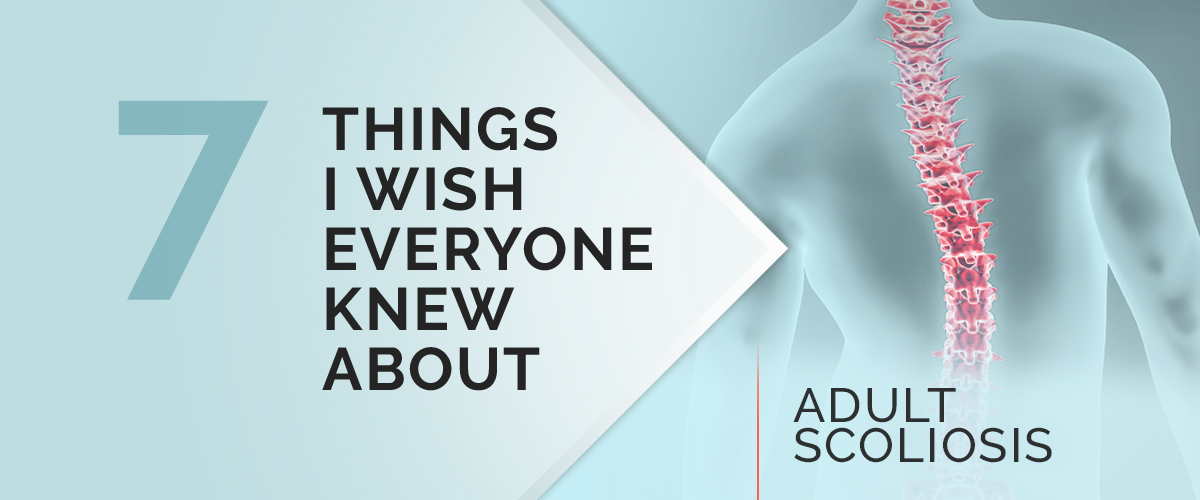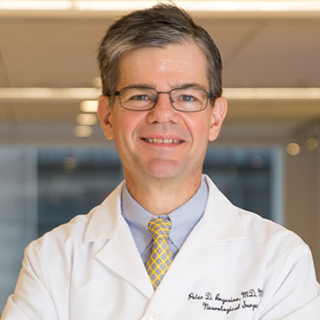Adult Scoliosis: Seven Facts to Know
An expert from Och Spine at NewYork-Presbyterian explains how to recognize scoliosis in adults, what causes it, and ways to prevent and treat the spinal condition.

Scoliosis, a common spinal condition, is a sideways curvature of the spine that is most often detected during adolescence. Once a person reaches adulthood and their bones have stopped growing, screening for scoliosis becomes much less frequent. But back problems later in life can still be due to adult scoliosis.
“There are two main buckets of adult scoliosis,” says Dr. Peter Angevine, a spine neurosurgeon with Och Spine at NewYork-Presbyterian. “The majority of adult scoliosis develops in adulthood due to degeneration of the spine. But adult scoliosis can also have developed in adolescence and it either wasn’t diagnosed, it wasn’t treated, or treatment stopped when the child reached adulthood.”

Dr. Peter Angevine
Adults are often surprised when they are told they have scoliosis, says Dr. Angevine, but he adds that the implications are different from a diagnosis in childhood. With adults, the focus often is on relieving the symptoms to help patients feel better, rather than stopping the curve.
For Scoliosis Awareness Month in June, Dr. Angevine, who is also an associate professor of neurological surgery at Columbia University Vagelos College of Physicians and Surgeons, shared with Health Matters seven things people should know about scoliosis in adults.
If you were diagnosed with scoliosis in adolescence, get tested as an adult. Adults are not regularly tested for scoliosis at annual checkups. If a person was diagnosed with or treated for it as a child, it may be a good idea to have a baseline X-ray in their 30s or 40s to re-establish the standard shape and curve of their spine and monitor any changes.
Scoliosis in adults is rarely caused by an injury. In most cases, adult scoliosis is not caused by damage or trauma to the spine itself but is a soft tissue issue. The spine is a stack of bones held together by soft connective tissue, ligaments, and discs. As we get older, those tissues become less elastic and weaker, and they don’t hold the stack of bones straight, which can lead to a curve in the spine. Additionally, a person with a physically demanding job, may develop more spine degeneration, which might develop into scoliosis.
A hunched back is not scoliosis. Forward hunching that might be seen in older men and women is not the same thing as scoliosis. Bending forward like this is called kyphosis, and, unlike scoliosis, it’s most often caused by osteoporosis, which is when bones become weaker.
Scoliosis treatments for adults and kids are different. In children a brace is used to control the sideways curve and keep it small enough that it won’t progress into adulthood. Once a child’s bones stop growing , usually around 18 years old, the bracing stops. One reason is that bracing in adulthood can allow a person’s core muscles, which are the very muscles needed to help support their spines, to atrophy. Instead of bracing, physical therapy, such as the Schroth Method — a non-surgical approach using exercise to slow the progression of scoliosis — is often used to control the curve.
Smoking is bad for the spine. Smokers have more degenerative spinal disease than non-smokers. It’s thought that the same chemical processes that cause emphysema, which is a breakdown of the elastic tissue of the lungs, can affect the spine. Those chemicals can be absorbed into the connective tissue of the spine and cause weakness, leading to scoliosis.
Nonoperative treatments can manage symptoms. Most adults have experienced some degree of back pain in their lives and have learned how to manage it, through exercise or medication. With adult scoliosis, people should start with the same principles that apply to general good back health to help manage the symptoms: Maintain a healthy lifestyle, good ergonomics, core strengthening, and good posture. If they reach a point where the pain extends to their legs or arms, if regular activities like walking or getting out of bed causes too much pain, or if the patient has received optimal nonoperative care and their symptoms remain unmanageable, that’s when their doctor may begin to talk about surgery options.
There are a wide range of surgical procedures to treat scoliosis in adults. Doctors will start with looking at the symptoms that are affecting the patient. For instance, often times the curve itself is not the problem but instead it’s a pinched nerve caused by the curve, and doctors can decompress or remove the impacted disc to take the pressure off the nerve. That won’t treat the scoliosis, but it will address the symptoms. If there is simply no way to address the symptoms without directly addressing the scoliosis, then more complex surgery may be considered.
Additional Resources
To learn more about Och Spine at NewYork-Presbyterian and the wide range of operative and non-operative services they offer, please visit: nyp.org/ochspine.
